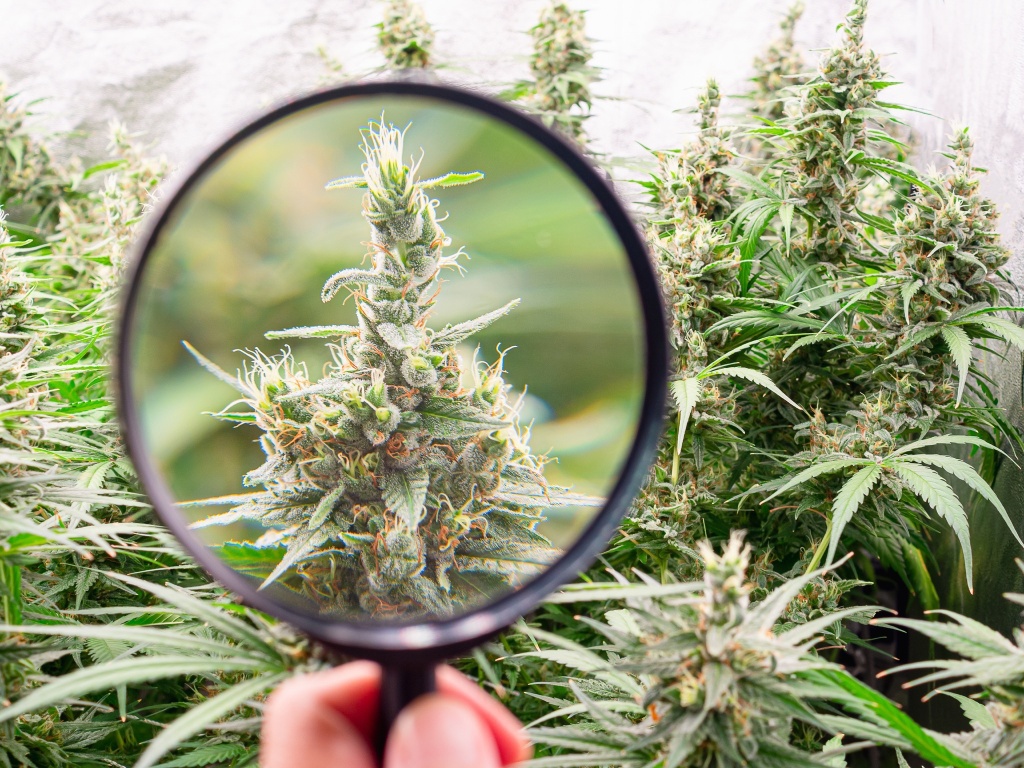Op-ed: This major media outlet is pushing reefer madness

Yesterday, President Trump sent the cannabis world into a flurry. After months of silence on the subject, Trump finally spoke publicly about marijuana reform. During a White House press conference, the president confirmed his administration is looking into cannabis, and that a decision on reclassifying the plant on the federal level could be weeks away.
Mainstream publications and niche cannabis outlets alike covered the news. Pot stocks soared on the potential of change. Industry thought leaders flooded LinkedIn to remark on the possibilities. And of course, reefer madness once again reared its ugly head.
RELATED: The media is lying to you about legal pot
As a weed writer, I peruse cannabis-related headlines throughout the day. This morning, I noticed that National Geographic had several stories in my Google News feed. I assumed they were riding the coattails of a trending topic. I also noticed all the headlines or story masts were tinged with alarm.
“This strange syndrome is linked to regular cannabis use—and cases have doubled”
“Does high-potency cannabis impair mental health?”
“Inside the lab-driven quest for the ultimate high”
“What exactly is gas station weed?”
The stories were also aggregated under another questionable headline: “The Potent Promises (and Perils) of Modern Marijuana.” The articles are all part of a section dubbed “The New Cannabis,” which is “a National Geographic exploration into the most critical questions raised by today’s stronger, stranger, ever more accessible weed.”
Even that sentence is coated with fear: “stronger, stranger, ever more accessible.” It’s giving fear-mongering in its purest form, and echoes other anti-pot rhetoric floating around the web. “Cannabis nowadays is 100 times more potent! Kids are buying it at the corner store and having psychotic breaks!” Same old story, same old song and dance.
RELATED: Legalization Nation: cannabis side effects or reefer madness?
Click-bait or worse?
Reading between the lines, I know exactly what NatGeo is doing. They’re mining for clicks. I get it. Journalists are typically beholden to traffic goals and must do whatever they can to grab people’s attention. It’s been the game for generations, except now it’s even more pronounced as competition comes in from influencers, microbloggers, and podcasters.
I have at times been guilty of the click-bait headline practice as well, despite my best efforts to provide balanced and unexaggerated coverage. National Geographic seems to be going all-in on scare tactics. That’s certainly one way to do it. Who knows, maybe it’s working for them. If it bleeds, it leads, right?
Since the publication in question is owned by the family-friendly corporation The Walt Disney Company, part of me wondered if the anti-weed rhetoric is a trickle-down effect. I hoped it was not the case, since journalists are supposed to abide by strict ethics that eschew outside influence.
But looking at National Geographic’s recent cannabis coverage, it definitely skews one way. One Redditor pointed out the publication’s perceived propaganda two months ago, dissecting an article on the impact of the plant on cardiovascular health.
The poster argues that the article lies by omission and misleads the reader about the negative consequences of cannabis use, pulling several examples of the truth being glossed over. This included presenting assumptions as facts and ignoring correlation versus causation.
RELATED: New data links pot with dementia – but it’s not the whole story
In an Instagram post from April 19, 2024 (the day before weed’s biggest holiday, 4/20), NatGeo was again warning the public about modern marijuana. The caption warns about the potential problems associated with potent pot:
“Today’s cannabis products are not your grandmother’s weed. And a growing body of evidence suggests they have the potential to impact both mental and physical health, beyond just dry mouth and fatigue. One recent study even links cannabis consumption to heart disease.”
I will give National Geographic some credit. Cannabis consumption certainly carries some risks. But the blatant one-sided nature of the publication’s coverage is eyebrow-raising, to say the least. And while I certainly understand the desperate need for clicks, I hope the unbalanced reporting is not indicative of a more sinister anti-weed propaganda machine—especially since NatGeo exists behind a paywall. Nowadays, the lines between fact and opinion are often indistinguishable.
